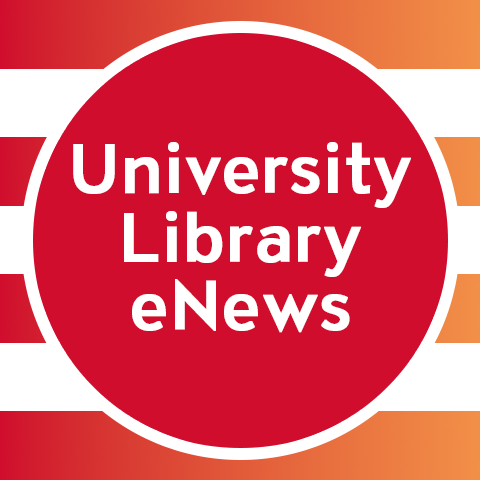Newsletter Edition: Spring 2024
Contributed by Elizabeth Altman and Kathy Dabbour
When you imagine the academic library of the future, perhaps in 5, 10, 20 or even 50 years, what comes to mind? Everything digitized, no more print? Help provided by AI services from your phone or digital displays throughout the library? Books and other physical resources delivered to your home by drones? Massive open spaces filled with flexible study furniture, technology, media equipment, and crafting supplies to make “things,” recreational and leisure spaces, including a café? Or, all-digital libraries with the empty buildings converted into classrooms, dorms, or office space?
Try googling the exact phrase “the future of academic libraries” and at least 175,000 hits will come up, and no two predictions are alike. We evaluated some of the more popular speculations against current research and the behavior and preferences of our own students.
Will print holdings be completely replaced by ebooks and online journals?
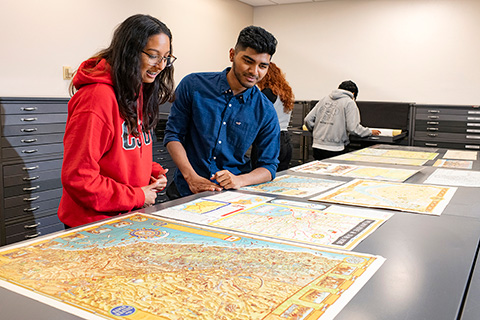
All libraries’ print collections have shifted since the start of the COVID-19 pandemic. The CSUN Library’s number of electronic titles increased 30% between 2020 and 2023, primarily due to the Library’s temporary closure or limited hours in 2020 and 2021. That increase also supports the university’s significant expansion of online and hybrid course offerings, across that time period and beyond. Many of our digital titles are purchased “in perpetuity,” and some ebooks can be read by multiple students at the same time, unlike a print book.
So, what about print? Although we spend roughly a third less on print monographs than we did in 2017, there are some items that are only available in print, and certain types of content are more appropriate for print publication. Another advantage is that access to print materials cannot be revoked by the vendor (titles in digital subscription book bundles for which we don’t purchase perpetual access can “drop out” of our subscription in between semesters). And students still want print: a Fall 2022 survey of CSUN students suggested that 20% still prefer print materials over digital in all cases, and that 40% base their choice of print or ebook on its content. For the past 40 years, Libraries have increasingly stored, circulated and shared print materials more efficiently with support of compact storage systems like the CSUN Library’s own ASRS (ACRL, 2023 Environmental Scan, p. 29). Our working relationships with 22 CSU campus libraries puts us in an advantageous position to retain and share print items long into the future.
Will reference services be taken over by AI?
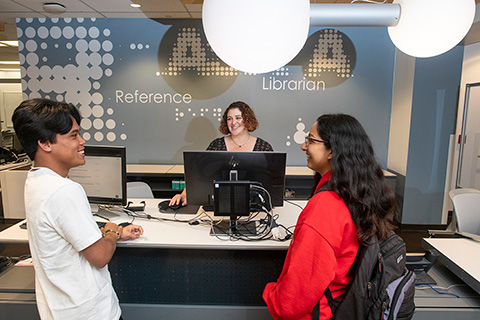
The short answer is, no. We might as well ask, if all information is on the Internet, why even bother going to school? The value of generative artificial intelligence tools -- which can simulate human conversation – depends on how they are used. AI tools are subject to “hallucinations” even when offered with good intentions, but they can also be used by governments, companies, and individuals with goals other than synthesizing information. Potentially, AI “bad actors” can litter the Internet with disinformation and plagiarized sources. More than ever, human librarians are needed to help students distinguish hallucinatory errors from facts, reliable sources of information from fictitious sources. “[AI] will affect how students research, creating teachable moments for librarians to inform students on verifying and evaluating information” (Coffey, 2023). Industry analysts see librarians rising to this challenge, helping department faculty navigate ethical concerns that arise with their students’ use of AI tools. Moreover, the introduction of AI tools such as chatbots that can answer directional and factual questions will free up future librarians for more student-focused research interactions.
With the expansion of online services and resources, what lies ahead for the University Library building?
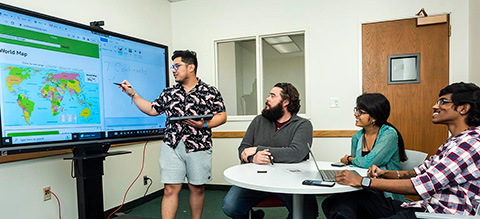
We envision the University Library as the “intellectual heart of CSUN” (Mission, Vision and Values). On a map, we are situated squarely in the middle of campus, equidistant from the Valera Hall Administration Building and the University Student Union. However, the COVID-19 pandemic and a 15% decrease in in-person classes decidedly shifted students’ face-to-face engagement with the Library and with campus as a whole. Visits to the Library building saw a 30% reduction between 2019 and 2023.
In fact, Library tenancy has been changing since the original core building first opened in 1973. The Urban Archives, University Archives, and Special Collections combined to become Special Collections & Archives in 1993. The Old China Hands Archive was added in 1996, followed by the International Guitar Research Archives (IGRA) in 2000 and the Tom and Ethel Bradley Center in 2018. The Deaf-related materials in the National Center on Deafness (NCOD) were added to the Library’s main collection in 2016, and the Map Collection transferred to the Library in 2017. One vision sees academic libraries as “seamlessly integrated into the teaching and learning activities of universities” by 2040 (Mumenthaler, 2023). The creation of the Learning Commons and the expansion of our technology-enabled group study spaces will continue to produce opportunities for social learning and collaboration at the heart of the campus. But because we have created more capacity for student resources, activities and partnerships, we will need to add a brand new staircase, due to start construction in 2025.
What “things” will students be making in the future CSUN Library?
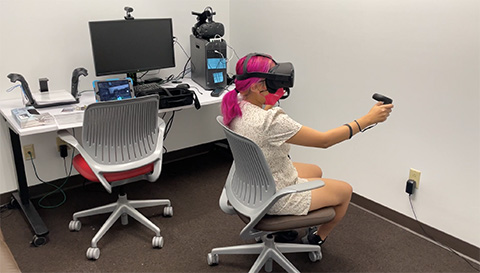
The Creative Media Studio launched in the Fall of 2014 with 8 iMacs, sophisticated cameras and media editing keyboards, and a sound recording booth. Today the Creative Maker Studio (CMS) has expanded to include 18 Creative Software stations plus a 3D scanner, button maker, vinyl cutter, sewing room, virtual reality station, video production room, eight 3D printers, and a wide selection of equipment and accessories to check out. Eva Cohen, Learning Commons Lead, says that “services continue to be in high demand and usage numbers have significantly increased compared to their peaks from before the pandemic closure.” And all of these services are supported by student workers with expertise in software and equipment, as well as workshops every semester. Makerspaces like the CMS have grown up in academic libraries as an extension of the “shared resource” service model libraries have always embodied. The resources and spaces they provide “create opportunities for hands-on learning (within the curriculum as well as outside of it), prototyping, tinkering, and experiencing an open culture community of those with shared interests” (Ferrari, 2021). Student feedback from Fall 2023 showed 57% of equipment checkouts were used for class projects, while 43% were for personal projects.
What else is in store for the CMS? Justin Kovalcik, Director of Library Information Technology, says, “The future of the CMS will be determined by students and their needs. Since its opening, the CMS has been unique in that our ‘maker’ concept has been to focus services based on student feedback, experience, and need rather than the more traditional approaches taken among other colleges and universities.” Operating on that principle, he sees the future CMS offering and taking advantage of Cloud Computing, Virtual Reality, Augmented Reality, and AI technologies that can simulate experiences for job training, analyze designs and systems by running scenarios, and be used to design games and VR experiences.
What will the next 50 years bring? The University Library will remain a flexible, responsive, forward-thinking resource that the CSUN community can depend on for information, services and collaborative space. And we already have a café.
References
- ACRL Research Planning and Review Committee (2023). 2023 environmental scan. Association of College & Research Libraries American Library Association. https://www.ala.org/acrl/sites/ala.org.acrl/files/content/publications/whitepapers/EnvironmentalScan2023.pdf
- Coffey, L. (2023, November 3). AI, the next chapter for College Librarians. Inside Higher Ed. https://www.insidehighered.com/news/tech-innovation/libraries/2023/11/03/ai-marks-next-chapter-college-librarians
- Mumenthaler, R. (2023, April 24). The future of academic libraries: a utopian vision for 2040 and beyond. De Gruyter Conversations. https://blog.degruyter.com/the-future-of-academic-libraries-a-utopian-vision-for-2040-and-beyond/
- Ferrari, C. R. (2021, August 24). Makerspaces in higher education: a library of knowledge to gain. LinkedIn. https://www.linkedin.com/pulse/makerspaces-higher-education-library-knowledge-gain-christina-ferrari/
